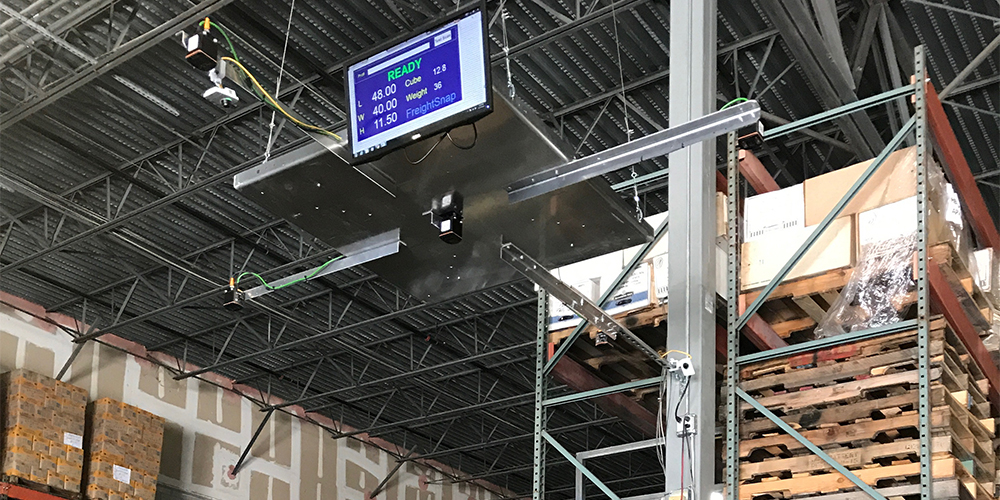REDWOOD LOGIN
Redwood PortalLTL
SCS
SCS Support
Rockfarm
The LTL industry is not generally known as a rapidly changing industry, subscribing instead to the old adage of “if it ain’t broke, don’t fix it”. This is perhaps best evidenced by the still widely used rates classification system – the National Motor Freight Classification (NMFC) system, a rate calculating formula practically unchanged since the Great Depression. But new technology promises to increase shipping efficiency and space allocation (and thus carrier ROI) by up to ten percent, and carriers can no longer turn a blind eye. Enter dimensionalizers.
A dimensionalizer is a weight and volume measuring device for measuring three dimensional or cube-shaped objects such as packages, parcels, cartons, or boxes. Dimensionalizers are automated systems that scan the weight and dimensions of freight in seconds, taking human error out of the equation, and offer simpler and more efficient rate calculations. Dimensionalizers have been used in parcel operations for decades, but LTL has only begun the switch in recent years. These are expensive pieces of equipment, coming in at $80,000+, but carriers can see a rapid payoff, within just a month or two.

The NMFC system has been the industry standard for calculating rates since the 1930’s. This system classifies goods using four metrics: density, stowability, handling, and liability. You’ll notice there is no explicit “dimensions” category. What’s more, the system generally works with averages, rather than operating on a case by case basis. Meaning that a product can be packaged at different densities in different shipments, but will often be charged at the same rate for both, taken from the average.
The NMFC system is also slow to account for changing production methods. For instance, running shoes saw a significant drop in average weight in the past several decades, due to use of lighter materials, but the density rating of footwear remained unchanged from 1986 to 2010. All of these approximations and small inconsistencies have added up to LTL carriers giving away quite a bit of free space in their trailers.
For the time being, dimensionalizers are generally used to supplement the NMFC system, rather than upheaving the whole process, so many commodities won’t show an immediate difference in rates. Dimensionalizers can scan freight in just a few seconds, but this can still prove to be the slow point in line-haul operations. Most carriers, therefore, are just using dimensionalizers to verify customer information, while still sticking to the NMFC rate formulas.
This hybrid transition period actually has the unintended effect of complicating things for many shippers, as they lack the means to measure shipments with the precision that carriers do, and are thus experiencing far more re-costs, as dimensionalizers find errors in customer data. But as dimensionalizers become more advanced and widespread, particularly among the largest shipping companies, a total restructuring of the rates determining system seems inevitable.
Carriers will, of course, welcome the coming ubiquity of dimensionalizers, as better allocation of space can only increase their ROI. But the shipping industry isn’t necessarily a zero-sum game. In a lot of instances, savings from more efficient packing of goods can be passed on to shippers. The exception to this will most likely be irregularly shaped goods, for which the rates will almost certainly increase.
Another upside for shippers will be the simplicity that dimensionalizers offer (once they’ve been widely accepted), which in turn should result in greater levels of efficiency for the LTL industry as a whole. The precision and consistency of the dimensionalizers will reduce the need for lengthy negotiations over classifications and rates. Dimensionalizers will provide both parties with photos and documents of each shipment, ensuring that everyone is on the same page. Miscommunication between shippers and carriers result in costly delays, re-negotiations, and re-costs, which both parties will be happy to do away with.
The most reluctant party to make the switch will be those shippers who have learned to take advantage of the antiquated NMFC system. Under the old system, in which shipment information is processed blindly before carriers even receive the product, shippers could generally get away with approximate dimensions. Carriers are often too busy to hand measure each shipment themselves, and so would be more likely to accept rounded numbers unless the discrepancy is particularly egregious. Long-standing relationships between shippers and carriers would also result in carriers relaxing their standards, and even shipping at a loss if it means preserving a business relationship. Thus shippers who believe they have the upper hand in rate negotiations will be the most reluctant to accept the shift to automation.
Shippers must accept that as the LTL industry becomes more automated, the opportunity for deals or free rides will disappear. As carriers have put a focus on efficiency of their space allocation, so must shippers focus on streamlining their packaging, and improving the density of their shipments. There is plenty of room for improvement here: freight dimensions were not as crucial before, so many shippers do not pay overly close attention, but with the shift in the industry, this will become all important.
If shippers do their part by packaging goods as efficiently as possible, there’s no reason why the shift to dimensionalizing won’t be a win for all parties involved. If you're concerned about your freight rates increasing due to this switch, contact LTX today to talk about decreasing your LTL freight rates!